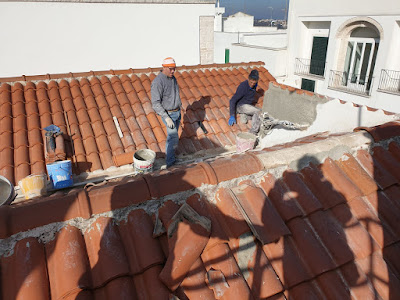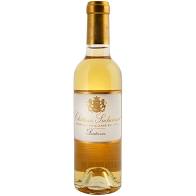The sixth in an occasional series of alternative Curriculum Vitae because no-one on their death bed says "I wish I'd spent more time in the office".
I am in no way a petrol head. I do not like driving. When asked what car I would buy if I won the lottery I immediately replied "Whatever my chauffeur likes to drive!"
Most of my cars have been acquired or disposed of with some degree of quirkiness.
Citron Ami Super: a rust bucket bought from my father. I was very excited as this was my first car. I told all my friends who, of course, asked "What is it?" I replied "It’s French." That’s all I knew. After a month of this, in the middle of a dinner party, I said "Hang on" and rushed out into the street to read the label on the back and ran back indoors and up the stairs chanting "Citroen Ami Super, Citroen Ami Super, Citroen Ami Super!" So then I knew the make and model and could answer the question.
I didn’t hang on to it long as the amount of daylight visible through the bodywork was rendering it a tad unsafe and it failed its MOT. I disposed of it at the local car breakers yard in exchange for a tenner, less than the value of the recently installed battery.
Golf GTi Mk2: Red to match my shoes. My first company car. When I joined a small consultancy I asked what car they would give me. They said "You have to choose, within a monthly lease value." Since I know nothing about cars that did not help at all. I bought a copy of What Car magazine and a round of drinks for my mates who drew up a shortlist on a paper napkin. On the Monday morning I went into the office and spoke to the car admin person. I started at the top of the list. "You can’t have that it’s too expensive", "You can’t have that it’s too expensive", "You don’t want a 16 valve do you? They're like hens teeth!" I had no idea what she was talking about so I said "I don’t think so" and opted for a Golf GTi.

"What colour do you want?" she asked. At the time I had a pair of bright red, patent leather shoes that were my party shoes, I also wore them to the Christmas black-tie party with matching red cummerbund and red silk bowtie. “I’ll have a red one to match my shoes" I said. And so it was that the only decision I made concerning my first company car was the colour to match my shoes, Tornado Red!
After a couple of years, in a moment of inattention, I turned into the path of an oncoming car and wrote off the Golf. That cost me 4 points on my license. At first I was upset but then realised that it wouldn’t happen again whereas there are idiots out there who would infringe repeatedly, accumulate 12 points and get taken off the road making the world a safer place for me.
Car colours: I coined the terms "Boy Racer Red", "Poseur White", "Cool Cat Black" and "Peacock Blue". Since meeting Mary I have added her favourite electric blue to the list: "MMG Blue" as we call it.
Toyota Celica. A sexy short term loan car. A temporary replacement for the Golf in Poseur White, it had pop-up headlights and a low-slung body that slithered round corners in a most satisfactory manner.
BMW 318. My first BMW with "optional" sunroof. I was going through the menu of additional features to get up to the allowed monthly lease value. The sunroof was very expensive so I said I won’t bother with that. The dealer replied that they always made them with a sunroof, even though it was an optional extra. If you want one without a sunroof it will have to be a special factory order and take several months! So I went with the sunroof and knocked off some of the other bells and whistles.
BMW 318: My second BMW and the wrong colour! At the end of the two-year lease I ordered the same model in Tahiti Blue as my new car. When it arrived it was Burgundy coloured. The colour chart said Tahiti Red so my mistake. I wanted blue whatever fancy name it was given. The dealer didn’t check and ask me what colour I actually meant. They simply assumed that I couldn’t tell the difference between red and blue but that I obviously must have meant Tahiti!
BMW 318: Another BMW, back to blue. Nothing to say about this car but then I took voluntary redundancy from the company and had to give it back!
BMW 5 series: a tank with gravitas! I used some of my redundancy pay out to buy a car. I would have gone with a boy racer Golf GTi but Mary said I had to have a car with gravitas, a quality I fear I may lack. So we popped down to our local dealer, Keystone Cars, who specialised in BMW's. I'd never bought a car from a dealer before so I said to Paul, "What questions should I be asking?". His response, "How many miles?", "Does it have full service history?", "What's your best price?". I dutifully parroted those questions, he replied and so the car was bought.
It was elderly and you measured the acceleration with an egg timer. But it was solid and comfortable for the long commute to my first freelance contract. The petrol tank was so large that it took more than £60 to fill it (and that was in 1999). Over the floor limit for most garages who then had to ring up for authorisation whenever I paid by card.
BMW M3: We only went in for a headlight bulb. We took the 5 series tank in to get some new headlight bulbs. Mary said “that’s a pretty blue colour” ("MMG Blue" of course) pointing to an M3. We looked it over and decided we liked it. I declined a test drive because my last four cars have been BMW’s. “But the test drive is my biggest sales technique!“ Paul confided. After a short discussion we walked out with a new performance car instead of two headlight bulbs. As Paul said "My kind of customer".
Keystone cars: Excellent service for over 30 years. Here I must put in a plug for Paul Heron at the local garage in Ringwood, Keystone Cars, from whom I have bought all my cars for the last 30 years. Most of them have been serviced by his head mechanic, Keith. We even make special pilgrimage down there for trade-ins or repairs.
BMW 330 Ci Sport. Killed by a piece of wood. After a few years we were persuaded to trade in the M3 because of the high mileage, this time for a normal coupe. However it was just over a year old, previously owned by a company director and had every single accessory going: special paint colour, automatic seat adjustment and lots of other gizmos.
The plan was to run it into the ground and when it finally died not bother with a replacement. Living in London our plan was to use public transport and, for longer journeys, hire a car or use a combination of trains and taxis. However I was not expecting the car to be killed by a piece of wood.
Driving up the M6 motorway in the dark I suddenly saw something wooden in front of me. In the middle lane, with cars to the left and cars to the right all I could do was grip the steering wheel and wait for the thump. I fully expected to hear the flap, flap, flap of burst tires but fortunately they survived and I continued my journey. I saw a couple of cars pulled over on the hard shoulder who had obviously hit the same debris.
The next morning I examined the car to find the front spoiler hanging on by a thread, the front foglight (what was left of it) dangling by a piece of wire. I took the car into a local garage so they could do a temporary repair. As I turned into the yard I managed to clip a van and knock off one of the side mirrors. I got the garage to cobble the spoiler back together which they did and handed me back a chunk of plywood, some bent pieces of metal and mangled plastic ducting that the mechanic had extracted from the underside of the car. It looked like I hit a piece of pallet.

BMW 3 series. My first diesel car. With no keyhole for the boot! After the incident with the piece of wood, I rang up Paul at Keystone to discover that a replacement spoiler would cost more than the car was worth Not to mention a new wing mirror on top. Plus there was a laundry list of other niggles that needed fixing. We checked his website to see what he had available and at the first opportunity drove all the way back to Ringwood to look at the likely replacements. We returned that same afternoon in a newer BMW 3 series, this time diesel instead of petrol.

A month later when going to Italy I disconnected the battery as usual and off we went. On my return I went to unlock the boot to reconnect the battery and, guess what, no keyhole! Googled and found that BMW had removed that feature between my previous car and this model. I couldn't open the boot using the remote because the battery was disconnected. I could open the front doors using the mechanical key to try accessing via the back seats. But no, the seat releases are inside the boot. More googling showed various drastic break-in tactics.
Finally gave up and call The AA for assistance. The mechanic turned up and I learned that there are battery terminals under the bonnet which I could open using the lever under the dashboard. After connecting his jump leads to the terminals, the car had power and I could use the remote to open the boot. Hurrah! Reconnected the battery and the mechanic checked the car over to discover that some of the electrics were knackered by the jump start, including the indicators. So we drove slowly in convoy to the BMW dealer where they replaced a fried fuse box at a cost of over £800. Ouch!
Apparently it was just bad luck the the circuit board blew when doing the jump start and normally disconnecting should be fine. Next time I will leave one of the back seats released!
Now this is the car we drive in the UK until it dies. Well that is the plan. My last ever car. We will see!
Fiat 500: the Italian job. Having retired we were spending more time in Italy and renting a car for 5 months would be ruinously expensive. So it was time to buy an Italian car which we could do as we had a certificate of residency. With the help of our friends Chris & John we were introduced to a good local garage who did us a deal on an Italian classic.
We were amused to see that it came with two spare seat belt buckles which the Italians use to silence the seatbelt warning.
She is a great little car. Perfectly sufficient for just the two of us and ideal for the narrow lanes in Puglia.






















































